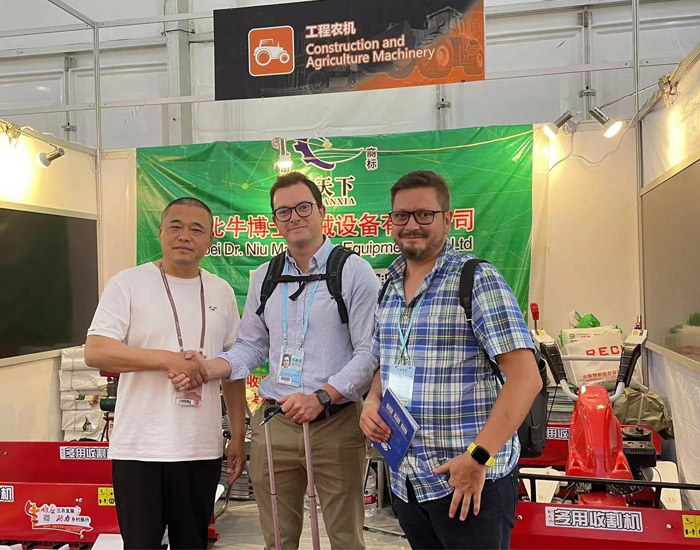Wheat Cutting and Binding Machine for Efficient Crop Harvesting Solutions
The Wheat Cutter Binder Machine A Marvel of Agricultural Engineering
The wheat cutter binder machine, a quintessential tool in modern agriculture, has revolutionized the way farmers harvest wheat and other similar crops. This remarkable piece of machinery combines efficiency, precision, and ease of use, making it an essential asset in the agricultural sector. The evolution of this device has not only enhanced productivity but also significantly reduced the labor intensity associated with traditional harvesting methods.
Origins and Development
Before the advent of the wheat cutter binder machine, harvesting was a labor-intensive process that required considerable manpower. Farmers relied heavily on sickles and scythes, tools that, while effective, were time-consuming and physically taxing. The need for a more efficient means of harvesting led to the invention of the first mechanical binders in the late 19th century. These early machines were quite basic and often required a team of horses and multiple operators, but they represented a significant step forward in agricultural technology.
As agricultural engineering progressed, innovations led to the development of more sophisticated designs that incorporated advancements in mechanics and materials. Today’s wheat cutter binder machines are often equipped with hydraulic systems, advanced cutting mechanisms, and automation features that have further improved their performance.
Functionality and Features
Modern wheat cutter binders are designed to perform multiple tasks simultaneously. They cut the wheat stalks, bind them into neat sheaves using twine or wire, and often even transport the harvested bundles to a designated location. The key components of a wheat cutter binder include
1. Cutter Bar This is the part of the machine that slices through the wheat stalks. It typically employs a series of reciprocating blades that efficiently cut through plant material.
2. Gathering Mechanism After cutting, the wheat is collected by a gathering mechanism that ensures a steady feed into the binding unit. This often includes augers or conveyor systems.
3. Binding Unit The binding unit wraps the cut wheat into bundles using twine or wire. Some advanced models feature automatic binding, which speeds up the harvesting process further.
wheat cutter binder machine

4. Transport System Once bundled, the sheaves are moved to a collection point – a crucial step that minimizes the need for manual labor.
Advantages of the Wheat Cutter Binder Machine
The integration of the wheat cutter binder machine into harvesting practices offers numerous benefits
- Increased Efficiency The machine can harvest large areas of wheat in a fraction of the time it would take a team of laborers. This dramatic increase in efficiency allows farmers to cover more land, which can lead to increased yields.
- Labor Savings By reducing the reliance on manual labor, the wheat cutter binder machine alleviates the labor shortages that are common in agriculture. This is particularly important in regions where farm work is seasonal and often under-staffed.
- Improved Crop Quality The precision with which these machines operate reduces the risk of damage to the wheat plants, resulting in higher quality crops that fetch better prices in the market.
- Versatility Many modern wheat cutters are adaptable enough to harvest other types of grains and crops, making them a valuable investment for farmers who cultivate various crops.
Future of Wheat Cutter Binder Technology
As agricultural technology continues to evolve, the wheat cutter binder machine is likely to undergo further advancements. Innovations such as GPS and drones may play a role in enhancing the operation of these machines, leading to even greater efficiency and precision. Additionally, developments in energy sources, such as electric and hybrid systems, could help reduce the environmental impact of farming while maintaining high levels of productivity.
In conclusion, the wheat cutter binder machine stands as a testament to the ingenuity of agricultural engineering. It has transformed wheat harvesting from a laborious task into a streamlined, efficient process that benefits farmers worldwide. As technology progresses, it is exciting to consider how these machines will continue to evolve and contribute to the future of agriculture, ensuring food security and sustainability for generations to come. With the ongoing challenges posed by climate change and a growing global population, the role of such machinery will undoubtedly become even more critical in the years ahead.
Latest news
-
When to Upgrade Your Old Forage HarvesterNewsJun.05,2025
-
One Forage Harvester for All Your NeedsNewsJun.05,2025
-
Mastering the Grass Reaper MachineNewsJun.05,2025
-
How Small Farms Make Full Use of Wheat ReaperNewsJun.05,2025
-
Harvesting Wheat the Easy Way: Use a Mini Tractor ReaperNewsJun.05,2025
-
Growing Demand for the Mini Tractor Reaper in AsiaNewsJun.05,2025







